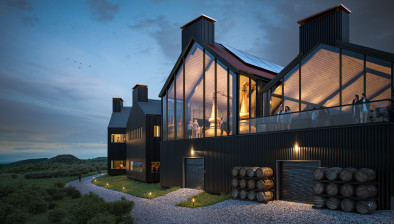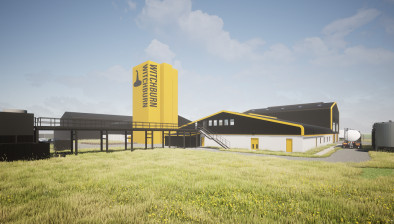Scottish architects win planning approval for largest distillery in England
 Plans for a distillery which was deemed “too Scottish” by residents of a Devon village has been granted planning approval.
Plans for a distillery which was deemed “too Scottish” by residents of a Devon village has been granted planning approval.
Designed by Helensburgh-based Organic Architects, the Princetown distillery will be the largest in England, producing 400,000 litres of whisky at start-up. It will also be the distillery with the highest elevation in the UK, so maturation should be slow.
The £4 million plans, which include a visitors centre and cafe, had received 46 letters of objection and four letters of support.
One resident of the village of Princetown said the “design is deemed to be Scottish, Dartmoor is not”.
Local resident Alison Geen wrote: “The pagoda whilst typical to Scottish distilleries is not typical here and inappropriate to a building in Princetown or anywhere on Dartmoor.”
One villager, who gave their name as D Spence, wrote that they would be more supportive of the idea if it made “less of an impact to the area”.
“Even the architect for the distillery said the design of the high tower and general appearance of the property is purely cosmetic and in keeping to a traditional Scottish distillery,” they said.
“Well Princetown is not Scotland and the looks are not in keeping to the local area.”
A new image of the proposal has been released by Organic Architects, who also design the Ardnamurchan Distillery, Drimnin & Lindores Abbey Distilleries.
The land on which the distillery will be built is owned by the Duchy of Cornwall and a traditional appearance has been designed with a Victorian pagoda which is a feature of many distilleries around the world.
The distillery site is adjacent to the Dartmoor Brewery which produces the well known Jail Ale. It is hoped that these two businesses will herald a future for the village as a centre of food and drink production.
Much of the discussion has focussed on the demolition of two historic buildings which formerly contained electrical generation equipment. Talks are underway to see whether these buildings can be retained and incorporated into the proposed designs.























